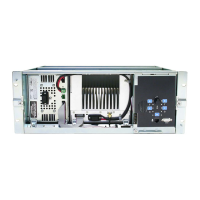10 Part A: Introduction © Tait Electronics Limited December 2007
In a standard base station, Task Manager can process up to 20 tasks. In a base
station with an Advanced Profiles and Task Manager license, Task Manager can
process up to 200 tasks.
Tasks and Comments
Task Manager acts only on the basis of the tasks in its task list. A task is rather
like computer code and takes the form:
IF < input> THEN <action>
When the IF part of the task becomes true, the THEN part is executed. There
are also IF NOT tasks: when the input of such a task becomes false, the THEN
part is executed. You can add comments describing the purpose of a task or
group of tasks. Comments have no effect on Task Manager processing.
Inputs
Task Manager inputs are of two main types, ‘basic’ and ‘override.’ Tasks are
processed differently, depending on the kind of input they have. You need to
understand these differences if you are creating complex sets of tasks.
Basic inputs Basic inputs come from various parts of the base station. They include all alarms.
While basic inputs can become true at any time, Task Manager will only process
them in the course of the regular 10 ms processing cycle. For example, if an
input becomes true in the middle of a processing cycle, Task Manager won’t
process tasks with that input until the next processing cycle. This is because it
only learns of the change after the completion of the first cycle.
Override inputs Override inputs can only become true through a Task Manager override action.
They are internal to Task Manager. Most become true automatically each time
the base station enters Run mode.
There are some other inputs that don’t quite behave like basic or override
inputs. Look under the input for more information.
Actions
Task Manager actions are of two main types, ‘override’ and ‘do now’. These
actions have different effects.
Override actions Override actions enable, disable, or toggle a configured base station function.
As most of these functions are enabled by default, the main use of override
actions is to let you turn off a function such as talk through repeater, power
saving, or even the receiver as a whole. The action changes the state of a flag,
which can only be changed by another override action. The status of each flag
that is controlled by an override action is displayed in Monitor > Base Station
> System Flags.
This flag can also be an override input. When an override action is carried out
(for example Enable power saving), the equivalent override input (for
example Power saving enabled) becomes true and any tasks with that input
will be processed.

